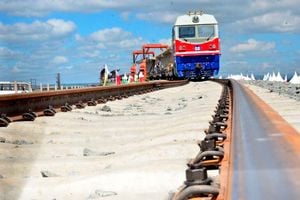Why rental prices in Nairobi's satellite towns are falling
What you need to know:
- Mlolongo and Athi River experienced a fall in both land and rental prices due to traffic congestion on the roads accessing the area.
- Land prices fell by 10 per cent in Mlolongo and by 4.4 per cent in Athi River compared to the previous quarter.
Rental property prices in Nairobi’s satellite towns declined in the second quarter of the year compared with the first, the latest Hass Consult Property index shows.
A number of the satellite towns have also been recording falling home sale prices since August 2015, a development attributed to a correction in the asking prices.
“Rental prices fell in Tigoni, Ngong, Ruaka, Thika and Kiserian as more completed units joined the market,” said Sakina Hassanali, head of research and marketing at Hass Consult. The index tracks advertised rents and land prices in 18 major suburbs in Nairobi and 14 satellite towns.
Mlolongo and Athi River experienced a fall in both land and rental prices due to traffic congestion on the roads accessing the area.
Land prices fell by 10 per cent in Mlolongo and by 4.4 per cent in Athi River compared with the previous quarter.
However, land prices were on an upward trend in several satellite towns, with Ruaka, Ruiru, Juja, Thika and Limuru recording double-digit increases.
The increase in the value of land has been attributed to the growing infrastructure around the areas, including proposed and continued construction of bypasses connecting the towns to the city.
Despite rental prices falling in many satellite towns, Kiambu and Ruiru defied the trend, with asking prices there rising by 10.1 and 9.8 per cent respectively for the second quarter compared with the first.
Falling rental prices have become a common trend in the property market as supply outstrips demand even as many people opt to own their homes rather than rent. Recently, other market surveys have shown that upmarket areas in Nairobi has seen a fall in rental prices.
“When land prices increase, the rental prices stagnate. This is because people are shifting towards home ownership meaning less demand for rental properties,” said Ms Hassanali.
The justification is that people go for the land and move out of rental houses.
According to Ms Hassanali, land remains a lucrative investment in satellite towns with annual growth rate of 15.3 per cent compared to 12.6 per cent in residential properties.
“The growth was driven by the land price increases along the touch points of the recently announced Western bypass and transactions on previously held land along the completed bypasses,” she added.
The property index also showed appreciation of property prices ahead of land in Nairobi suburbs for the first time in nine years.
This was attributed to the high prices of land that have prompted investors to buy property that can be rented out in the short term and sold in the long run.
Muthaiga was the highest gainer in terms of land price increase with a 13.1 per cent change between quarter one and quarter two with the average value of an acre currently at Sh121.3 million.
Upper Hill remained the most expensive of the suburbs with an acre going for Sh517 million while Ruaka was the most expensive satellite town with an acre averaging Sh68.3 million.




